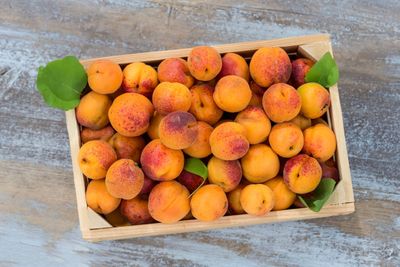Apricot Handling Tips
Commercial growers must pay special attention to packing, temperature, and humidity when storing apricots for the market. Apricots must also be kept separate from fruits that emit ethylene, which will hasten their ripening and diminish quality by the time they arrive at stores. Home gardeners must also be sensitive to these issues if they want their hard earned fruits to last. Think of apricots as almost egg-like in their delicacy. Bruises, fruit wounds, and fungal problems can follow improper harvest and post-harvest care of apricots. The timing of harvest will vary depending upon cultivar and zone but, in general, you should pick them when still yellowish green. Once the green fruits are starting to turn golden, it is time to harvest. Next, it is important to pack them carefully to avoid bruising, as the fruits brush against each other and the container. Foam eggshell forms, newspaper, and other cushioning items can be used to soften the storage bed used for storing apricots after harvesting. Never stack more than two layers to avoid crushing the fruits. Commercial growers will either hydro or room cool apricots prior to packing to increase shelf life, but this isn’t necessarily practical for the home grower.
How to Store Apricots
After careful packing, you must meet certain environmental conditions for storing apricots after harvesting. The optimum temperatures for holding apricots are 31 to 32 degrees F. (-0.5 to 0 C.) Avoid anywhere that freezing may occur. The relative humidity should range between 90 and 95%. Do not place the crates or boxes near areas in which you are also storing apples, plums, pears, or peaches because they release ethylene gas. Post-harvest care of apricots isn’t difficult, but you must adhere to a few rules in order to preserve the crop. With certain cultivars, you can expect fresh fruit to keep one to two weeks, while others last up to four weeks. Adhering to the environmental and storage rules for apricot post-harvest care will ensure that you enjoy apricots for a long time after the tree is bare.
